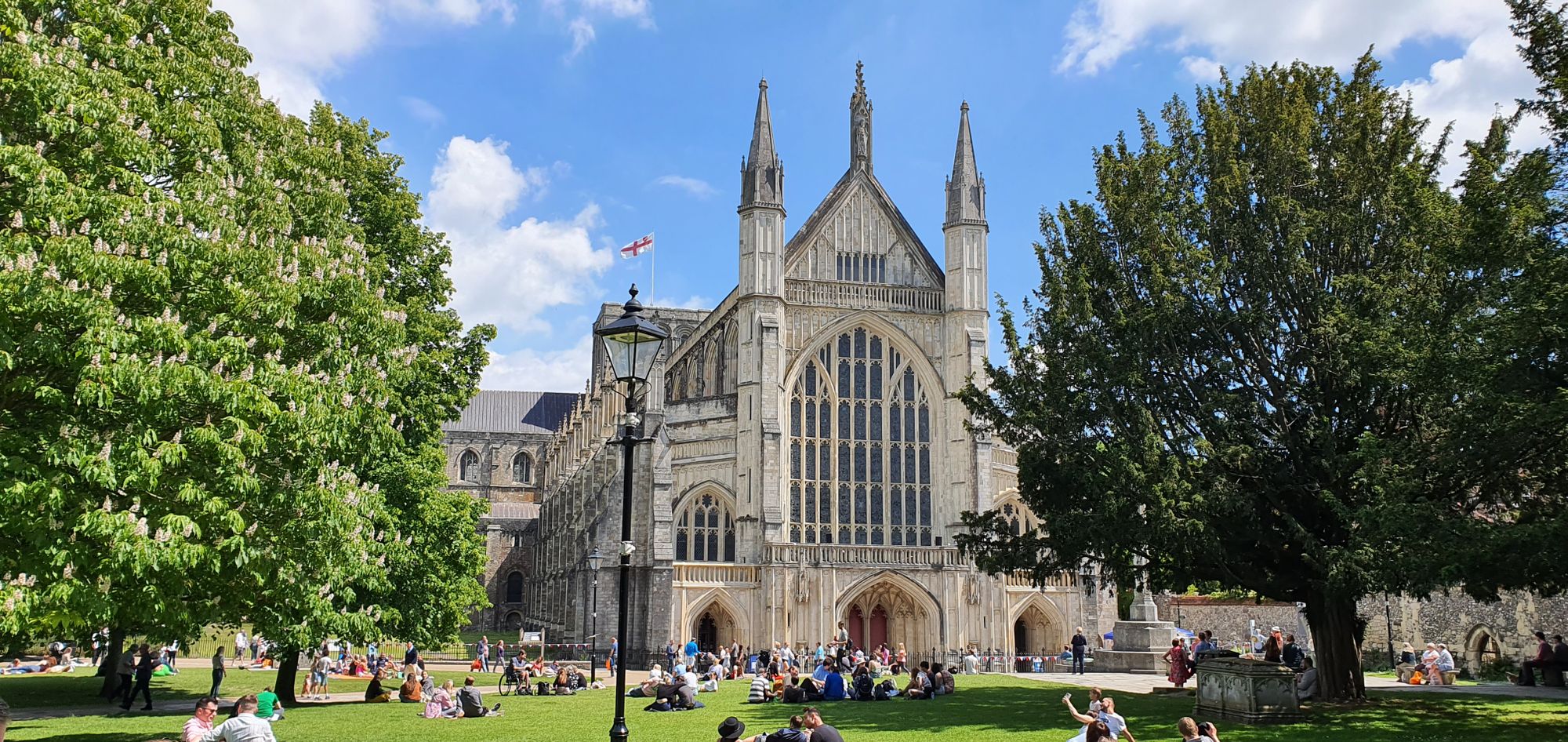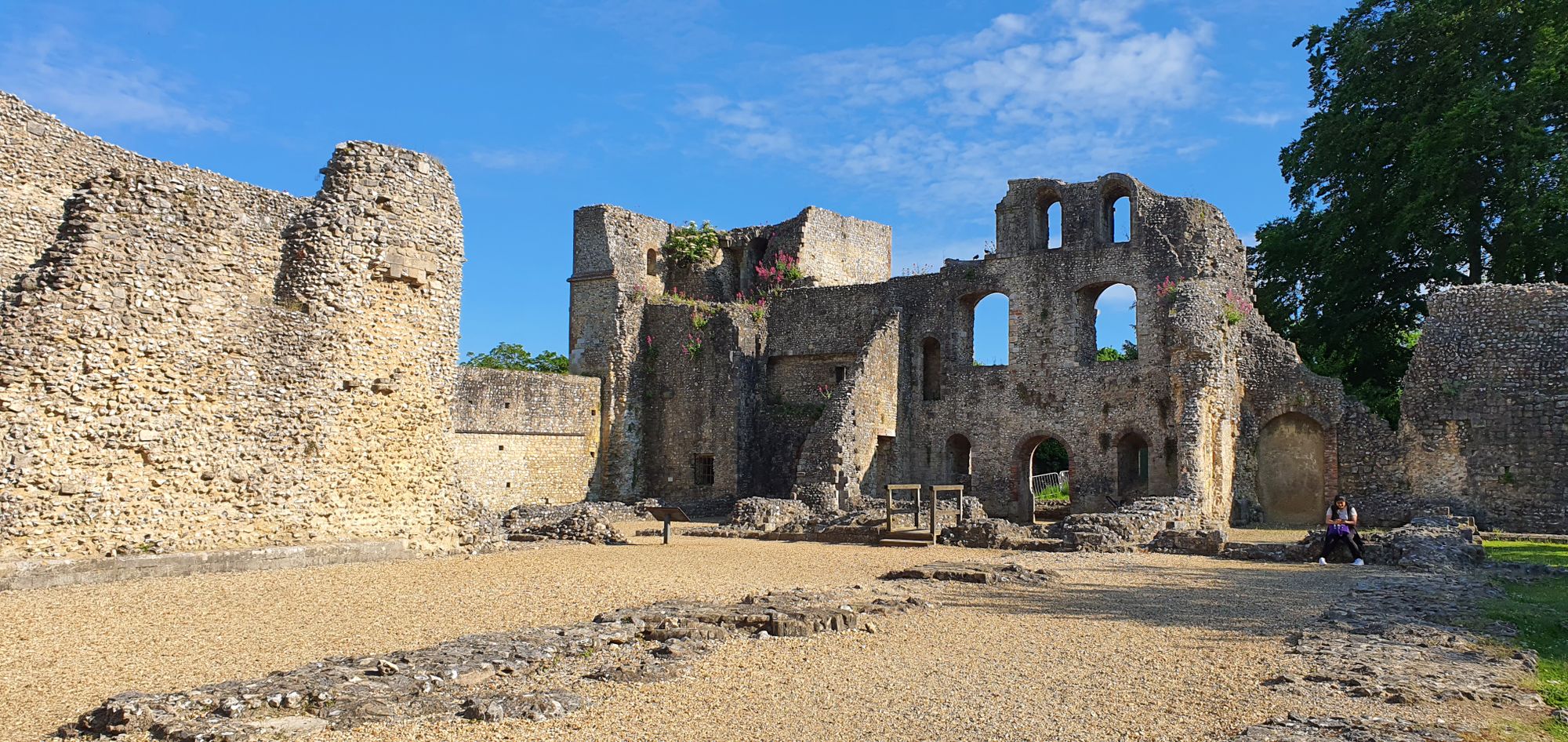Discover the history about Winchester, what Winchester is mostly famous for, historical landmark and famous figures of the oldest city in England and more!

Winchester is one of the oldest cities in England. The city has historic connections with famous figures like King Alfred the Great, Danish vikings, Jane Austen and even the legendary King Arthur. It is also home of historic landmarks such as Winchester Cathedral, Kinghts of the Round Table, oldest working watermill just to mention a few.
This blog outlines major history facts about Winchester that you probably did not know. If you plan to visit Winchester anytime soon make sure you visit my other blogs about the city such as Visiting Winchester in a Day or 10 Places you Must Visit in Winchester.

The Pilgrims' Way (also known as 'Camino Ingles' or called 'The English camino de Santiago') is the historical route supposedly taken by pilgrims from Winchester in Hampshire, England, to the shrine of Thomas Becket at Canterbury in Kent.
It is one of the historic Camino de Santiago route taken by pilgrims coming from Northern Europe. It is a 120 miles long or 39h walking path.
Pilgrimate from Winchester to Canterbury began due to Thomas Becket's canonization in 1173. Becket was Lord Chancellor and appointed Archbishop by King Henry II, but after his death, his shrine at Canterbury drew pilgrims from different places as it became the most important place for them to visit in the country.

Winchester Cathedral is medieval Anglican and Gotic-style cathedral with around 1,000 years of history. It is one of the largest Gothic cathedrals in Northern Europe and the longest in overall length (170 m long).
The cathedral was built from 1079 to 1532 and is dedicated to numerous saints including the Holy Trinity (Saint Peter, Saint Paul and Saint Swithun) as well as famous Jane Austen, Emma of Normandy, and other famous English figures.
When William the Conqueror invaded England in 1066, the cathedral was demolished and rebuilt in its current form and Norman bishops were installed in place of the Anglo-Saxon bishops.

Jane Austen is one of the most recognised novelist in English history. Some of her classic novels include: Sense and Sensibility (1811), Pride and Prejudice (1813), Mansfield Park (1814) and Emma (1816).
Her house is located in No. 8 on College Street and she spent her last days in Winchester, before she died there at age 41 due to illness in 1817. She is buried in the Cathedral’s north nave aisle.
Even though she is buried among kings and queens, Jane Austen is perhaps the most recognisable names laid to rest at Winchester Cathedral.

Wolvesey became the residence of the bishops of Winchester in the late 10th century. Its name means 'Wolf's Island' and it is located in the higher ground between two streams of the river Itchen. Through the medieval period, the bishops held one of the highest positions of power in the English church and national politics.
Bishop Henry of Blois (1129-71) built this palace beffiting his wealth and powerful position. The palace survived 500 years until it was destroyed by the Roundheads during the English Civil War in 1646.

A watermill is a mill that uses a water wheel or water turbine to generates energy via hydropower.
Rebuilt in 1744 and restored back to full working order in 2004, Winchester city mill is probably the oldest working watermill in the UK. It was mainly used to produce traditional stoneground wholemeal flour utilising the river Itchen clear waters to operate. The amount of flour produced and sold in 2019 passed over 15 tonnes.
Today, the mill welcomes over 50,000 visitors a year, and hosts regular milling and baking days, as well as a wide variety of family activities.

The round table is well known for its interpretation of the legendary King Arthur’s round table, but it was in fact built for Edward I (King of England, 1272-1307) in the 13th century as part of a Round Table tournament.
The table includes inscriptions of the knights' names with a tudor rose in the middle, and events celebrated over this table include jousting and feasting to commemorate either a wedding or a victory in battle.
The table for Edward I was just plain wood but Henry VIII (King of England, 1491-1547) commissioned it to be painted to imitate the mythological King Arthur's Round Table.

King Alfred (also known as King Alfred the Great, 849-899) was a Anglo-Saxon king in the 9th century mostly famous for defending Wessex kingdom (now made up of counties of Hampshire, Dorset, Wiltshire, and Somerset) against the Vikings.
He redesign the whole city with a grid-like layaout to be better protected againts the Viking raids, made good laws and translated books from Latin to English to improve education during his reign in the 9th century.
Related blogs:
Want to know what to do on your next trip? Explore our growing blogs in our MapScratched Travel Blogs site and use the filters that we provide to plan your trips faster.
If you want to become an author FOR FREE and share your travel experiences with other adventurers, make sure you fill in our very short travel author form.